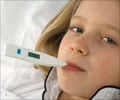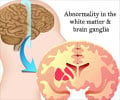Children with idiopathic new-onset epilepsy have a significantly higher rate of remission than those with remote symptomatic epilepsy, a study conducted by researchers has confirmed.

According to the Epilepsy Foundation, a person is considered to have epilepsy when they have two or more unprovoked seizures. Epileptic syndromes can be either idiopathic (of unknown cause) or symptomatic of underlying brain damage or disease. In general, idiopathic forms have a better prognosis in terms of both seizure control and eventual remission than do symptomatic forms. While epilepsy can begin at any time of life, 50% of all cases are diagnosed before the age of 25 with many having initial onset in early childhood. Currently there are an estimated 326,000 children under the age of 15 with epilepsy in the U.S.
"Knowledge of the long-term outcome of childhood epilepsy is an important factor in treatment decisions," explained study leader Ada Geerts. "The course of epilepsy is in our view important to investigate, because intra- and inter-individual variation may be considerable. Periods of remission and relapse may interchange which may influence our interpretation of the results of prognostic studies, advice to patients, treatment strategies, and timing of referral for surgery."
Researchers indicate it is still largely unknown whether the long-term outcome of epilepsy is determined by its natural course or whether it can be modified by treatment. Whereas outcome in terms of remission or death can be determined easily, the long-range course of epilepsy is more difficult to describe. To address the need for studies with prolonged follow-up in a large cohort of patients, the research team evaluated the course and outcome of childhood-onset epilepsy in 413 children over a 15-year period.
The study commenced in 1988 with the team evaluating 494 children (aged 1 month to 16 years) who were newly diagnosed with epilepsy. The patients were followed for 5 years, and then contacted again by questionnaire 10 years later. A total of 413 responses were received. The mean age at onset of epilepsy was 5.5 years, and the mean age at last contact was 20.8 years. Etiology was idiopathic in 50.8%, remote symptomatic in 27.8%, and cryptogenic in 21.3%. The mean follow up was 14.8 years.
Two hundred ninety-three of 413 subjects (70.9%) had a terminal remission of at least 5 years at the end of the study (61.9% off antiepileptic drugs [AEDs]; 9.0% on AEDs). In contrast, epilepsy remained active in 30% of patients and became intractable in 10%, with the majority of those with active epilepsy or intractability having a non-idiopathic etiology. In patients with a favorable course, idiopathic etiology was predominant, and the mean longest remission during the first 5 years of follow-up was significantly higher than in all other groups. The researchers concluded that AEDs probably do not influence epilepsy course - they merely suppress seizures. Mortality was significantly higher only in those with remote symptomatic etiology.
Advertisement















